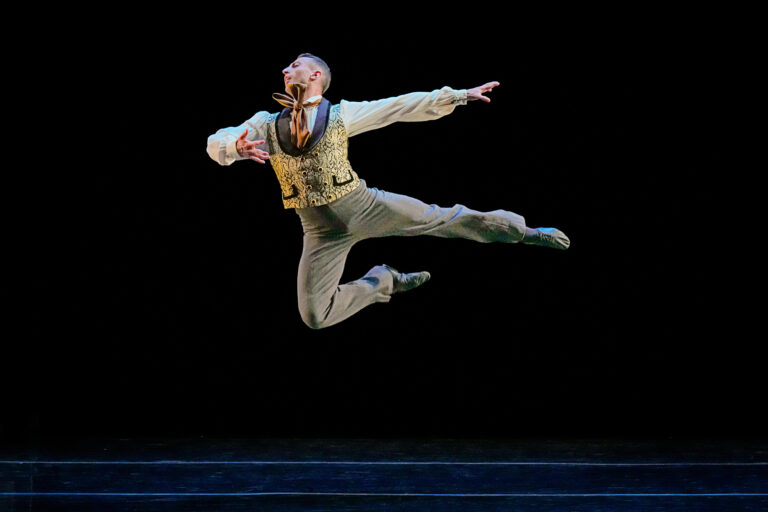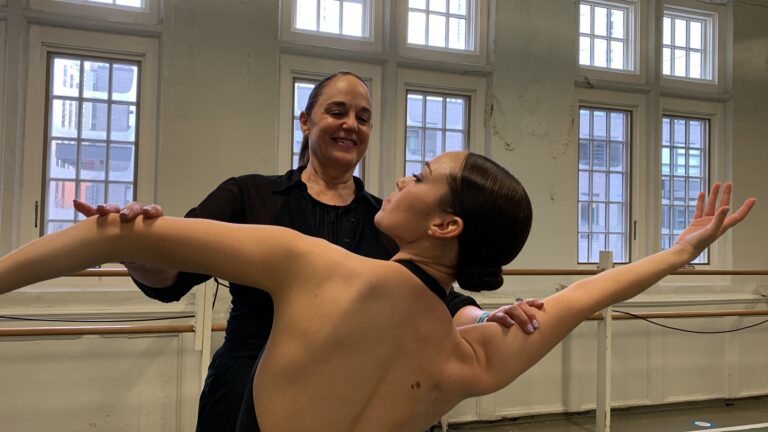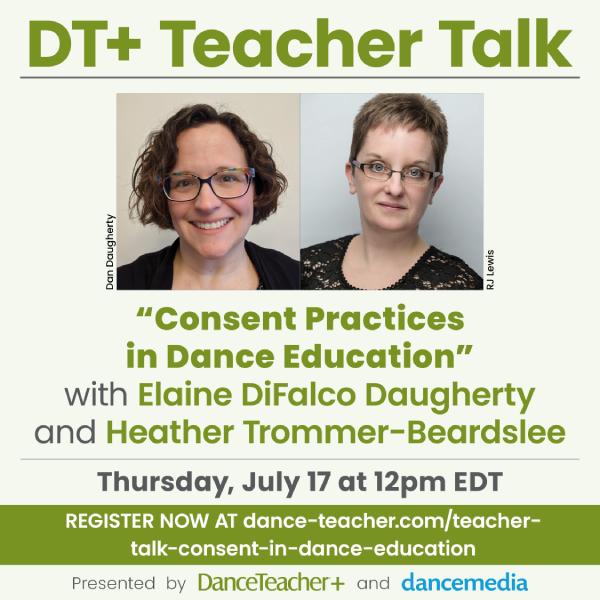
There were plenty of reasons why we were happy to bid 2020 a not-so-fond farewell, but for tap dancers, the end of such a difficult year was the final curtain on a decade in which the art form experienced remarkable growth.
Over the past 10 years, The School at Jacob’s Pillow launched its first-ever tap programs; companies such as Dorrance Dance and Caleb Teicher & Company emerged and produced award-winning work; Operation Tap became an important voice in online tap education; the American Tap Dance Foundation established its new home in Greenwich Village; The Kennedy Center presented its first full-length tap concert at one of their major venues; and so much more.
As the new year sees tap dance trying to maintain this positive momentum despite the ongoing restrictions of the pandemic, we invited several of the field’s living legends to meet on Zoom and discuss how they perceive the current state of tap dance and tap education.
The participants included Brenda Bufalino, renowned performer, master teacher, choreographer and co-founder of the American Tap Dance Orchestra (now the American Tap Dance Foundation); Debbi Dee, highly sought-after teacher at worldwide conventions and festivals, as well as universities and private schools; Jane Goldberg, tap historian, writer, soloist and comedian; Deborah Mitchell, founder and artistic director of New Jersey Tap Dance Ensemble; Tony Waag, artistic director of the ATDF; and Dianne Walker, celebrated teacher and original cast member, assistant choreographer and dance captain of Broadway’s Black and Blue. The interview has been edited and condensed for clarity.
Ryan Casey: What immediately comes to mind when you think about the state of tap dance today?
Deborah Mitchell: It’s in a good place. When I think about when I came on the scene, or even what was happening 15 or 20 years ago, you can’t even compare it. There’s so much happening, so many voices out there, so many young people involved. I’m having a hard time keeping up. You still run into some people that say, “What happened to tap dance?,” but I know that they’re just not involved in the arts scene, because tap is out there in so many directions. It’s global now. It wasn’t so widespread when I started.
Debbi Dee: I agree. All these tap festivals and intensives didn’t exist years ago; it was just ballet intensives. It’s wonderful to see how much tap has grown.
Jane Goldberg: It’s really promising. When Brenda and I used to talk about tap, it was called a “lost art” or a “dying art.”
Brenda Bufalino: The original problem of tap’s “demise” was that tap didn’t die, but the venues did. Although the state of the dancing itself is quite amazing, and there are plenty of tap dancers working, one of the things we’re still hoping for is that more venues open up for tap. I’ve really been suggesting to studios to please hold studio performances.
Dianne Walker: We owe Aaron Mattocks [director of programming at The Joyce Theater in New York City] a round of applause. He has been very vocal about the fact that he felt tap dance has not had its due or visibility. There were four fabulous shows in one season at The Joyce, and he’s agreed to do that again. I’m hoping his voice will continue to flourish and we have other theaters around the country who will hear him.
Deborah Mitchell: Many presenters still hesitate to have a concert of just tap. They’ll immediately accept a modern or ballet company, but if you bring in a tap company, it’s always “Well…” They always wonder if it’s going to be a draw.
Jane Goldberg: Or they’ll ask, “What are you going to do to the floor?”
Deborah Mitchell: That’s if they even know what we need. They’ll say, “Oh, the floor’s not a problem; we have marley.” We’re still fighting to get them to understand what the needs are.
Tony Waag: A lot has not changed!
Ryan Casey: In terms of what has changed for tap dancers, how has tap responded to the pandemic?
Tony Waag: It’s like a new frontier. We’re reinventing ourselves again, and I think tap dancers do that all the time because we’ve had to. We’ve had to create our own venues from the beginning. There’s no doubt that teaching tap on the internet is limited for obvious reasons: the sound lag, the minimum space. But at the same time, I’m excited about the interactions being much deeper. I had an artist in residence tell me that she’s enjoying the one-on-one lessons because she can actually have a conversation.
Dianne Walker: I’ve watched Derick [K. Grant]’s virtual improv labs on Saturday mornings—I don’t know if they would have happened that way without COVID. It’s a wonderful way for dancers to get more one-on-one time and start getting into themselves as dancers and work choreographically and improvisationally.
Brenda Bufalino: There’s a nascent interest in composition and choreography, which is what I’ve been concentrated on teaching. There’s a history of dance composition being taught to modern dancers and ballet dancers, and tap dance has lagged behind that. It’s exciting to watch younger dancers using their improvisations to drive composition.
Jane Goldberg: Brenda, you were trying to start a tap conservatory at one time, right?
Brenda Bufalino: Yes, that’s still a dream, though I think we’ve achieved that at the ATDF and with [The School at] Jacob’s Pillow. I remember the first time I went there in the ’80s. Nobody even talked to me; I was not welcome. But Michelle [Dorrance] and Dormeshia’s programs have been terrific.
Ryan Casey: The tap program at the Pillow definitely marks a big step forward in tap education. What other changes are you all seeing?
Debbi Dee: There are a lot of dance conventions and even dancing schools in the country that don’t offer tap anymore, which is pretty sad. At least someone who wants to take tap can go to festivals, but I think it has to start at the dance schools, having that one person with a love for tap to expose the kids. Most dancers go to their local dance studios first.
Brenda Bufalino: Why do you think that’s happening?
Debbi Dee: I think it has a lot to do with what kids are seeing on television, like “So You Think You Can Dance,” where they’re not representing tap.
Brenda Bufalino: I think it’s because tap is too hard. It’s so much more complicated. All people, even if they can’t dance yet, they can walk and lift their arms and turn. But you can’t do a shuffle until you learn how to shuffle!
Deborah Mitchell: I think you’re right, Brenda. On “So You Think You Can Dance,” for example, they go into the studio and have to be ready for a dance in a week’s time. You can’t do that with tap dance! You’re not, in a week, going to be able to do anything that’s representative of what we do. Those of us that tap make it look easy, and people don’t realize the years of training it takes to do it.
Dianne Walker: In the ’40s and ’50s we had great dancing schools because the people who were teaching were straight off the [vaudeville] circuit. As that generation grew older, unless they had a family member who continued the legacy, they started to employ their student teachers, and over the years the work started to pale by comparison. But I do applaud the dancing-school teachers for holding it down all this time—whether it was good, bad or indifferent.
Ryan Casey: Are you seeing dancing schools as not valuing tap, then? Or not having qualified teachers? What’s the problem?
Deborah Mitchell: It was war at first, teaching rhythm tap. The dance schools literally said, “Don’t talk to us, stay away,” as if we were doing something that was against them. They had never heard anyone teach tap by using another kind of language, with phrases like za ba ba BA. They didn’t know what the hell you were talking about.
Debbi Dee: More studios are realizing that we’re not there to steal their students; we’re there to grow an art form.
Dianne Walker: It took a long time for us to come to a relationship with the dancing schools where they understood: We don’t want to take your students—we just want to bring in some knowledge that’s going to help strengthen your program. It’s great to see them employing tap dancers now, because then our dancers have a place to work. I see us moving toward being a more integrated discipline, which feels good.
Brenda Bufalino: In the early days of tap festivals, it was adults who came—adults who would then be able to teach. Now in the festivals it’s mostly children, and they’re not going to be teaching. I wish we could reach out to get more teachers at our festivals, because if we want to propagate the art form and keep advancing history, too, we need adult dancers.
Debbi Dee: Brenda, do you think adults aren’t taking class at festivals because our young dancers are so good now, and maybe the teachers are nervous about dancing with them? Would it be more appropriate to have teachers’ classes?
Brenda Bufalino: Well, I’m not only talking about teachers; I’m talking about adult dancers. A lot of people start tap dance late. Those people who came to the early festivals weren’t teachers, they were students, and they became the teachers and the choreographers.
Another exciting thing is the tap teacher training program [at the ATDF] that Susan Hebach and Margaret Morrison have put together. Some really fabulous dancers come to that and are learning how to teach beginners, which is exciting to see.
Tony Waag: I would love to think it’s a good sign that there is more demand for teaching. More teachers are showing up because they need more information.
Deborah Mitchell: In any industry, people go back for refresher courses. Why should it be any different for us?
Debbi Dee: Well, not all dancers are good teachers.
Deborah Mitchell: I agree. And not all great dancers are comfortable with an audience. The stage is a different kind of place.
Brenda Bufalino: That’s true. As we’ve all been dancing on tap boards lately, I’ve been trying to describe what it feels like to be on a stage. We’ve been teaching in lines, which has been dangerous. I feel responsible that I have kept people in place for far too long, in part because that’s how we did our festivals in the ’70s and ’80s. That’s something for us to think about as educators: how we use the stage and the dance floor. Young dancers are absorbing that information.
Ryan Casey: What else are you seeing in today’s young tap dancers?
Jane Goldberg: I’m concerned that technique has overridden some of the other great aspects that were part of the tap tradition, like the comedy of the old hoofers. On the other hand, I’m finding now that young dancers really want to know more about the history. They’re a lot more interested in tap lore than they used to be.
Tony Waag: Brenda taught me a long time ago that it’s really not about tap dance. Tap is the vehicle for a much larger experience. I love what she said earlier about how hard it is—it is, it’s so complicated and fascinating, and that’s why we love it. [The history of tap] parallels the American experience. There’s ageism, sexism, racism…
Jane Goldberg: Yes, all the “-isms.” Tap is like a microcosm of the world.










